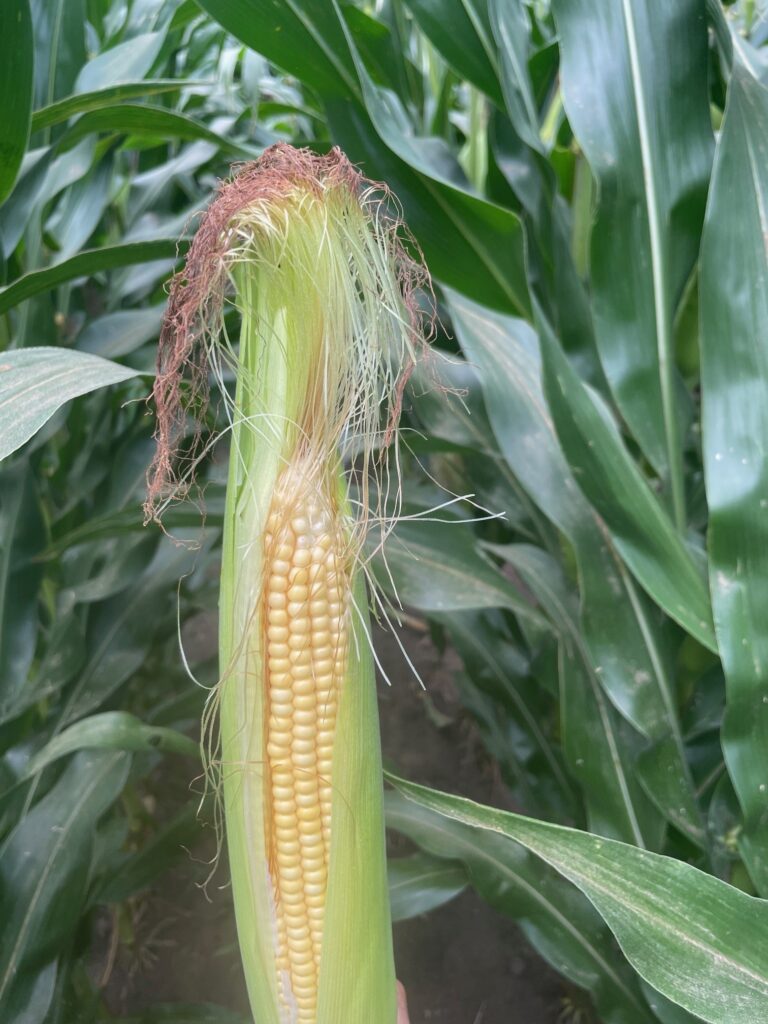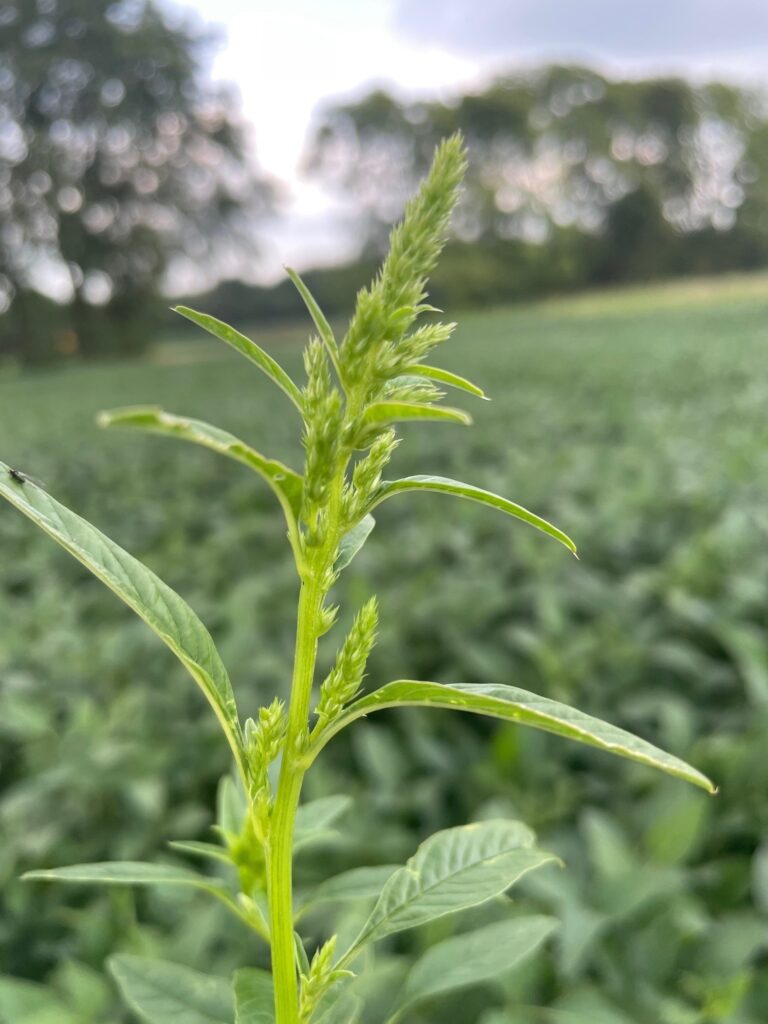Archive
If you find yourself wondering what happened when, look no further than the Crop Report Archive. We’ve compiled past reports, listing the most recent first. You can search by Region, Month, or Reporter to find information.


Another week of varied precipitation in northeast Illinois, but mostly favorable growing conditions. Corn has reached R3 (milk stage). At this stage the moisture of the kernel is about 80%. Leaf disease incidence continues to be low in corn and soy fields visited. Most soy is R3 to R4, beginning to full pod. In addition to the crops entering their reproductive stages, so too are some weeds, including waterhemp. This weed is dioecious, both male and female plants having flowering structures. Once mature, the plants can be easily sexed by the presence or lack of shiny black seeds.
This week I attended the Monmouth Research Center Agronomy Day and was able to gain insight explaining why many were seeing waterhemp uncontrolled by post herbicide applications. The surviving plants appeared weeks after the post herbicide application as bushier, more robust plants. University of Illinois ‘s Caleb Wepprecht discussed “HPPD Resistant Waterhemp- A Growing Concern” and shared his take on weed control challenges from this year. A few factors in waterhemp escapes were inadequate spray volume on larger plants, leading to inadequate coverage of the growing points, even with systemic herbicides, as well as low use rates/dosage of herbicide in the weed itself, along with the concept of metabolic herbicide resistance, leading to the waterhemp’s survival and altered plant structure. As farmers see waterhemp escapes in fields, Caleb encouraged attendees to take whatever steps possible to prevent the prolific seed-producing weed from maturing and causing future concerns


 and then
and then